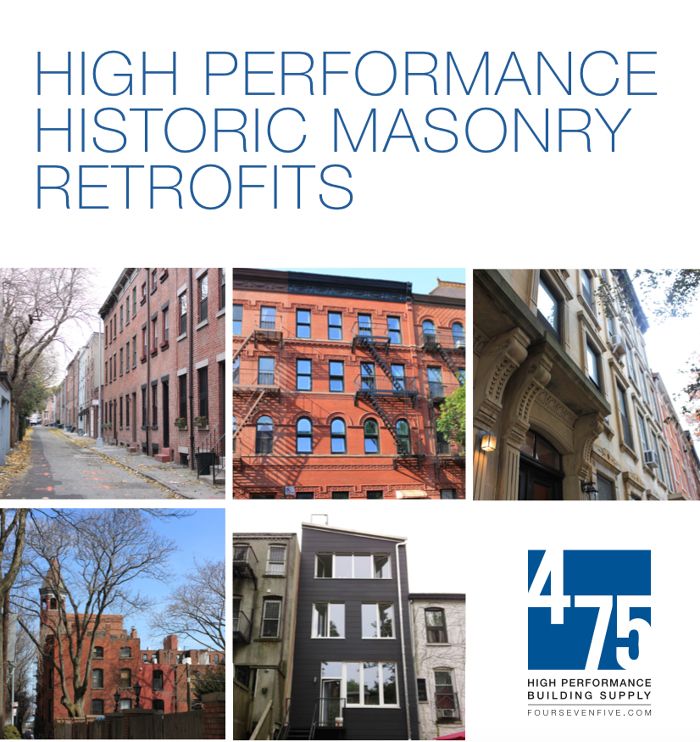
A New York City firm that specializes in materials for high-performance buildings has published an online book that explains how historic masonry buildings can be retrofitted for dramatically higher energy performance.
High Performance Historic Masonry Retrofits is the work of 475 High Performance Building Supply, the Brooklyn-based company. Along with a number of CAD drawings, the book is available as a free download.
The book leans heavily on the core concepts of airtightness and continuous insulation that are keys to Passivhaus construction, 475 co-founder and lead author Ken Levenson said in a press release. In addition to running 475, Levenson, an architect by training, also is co-president of the North American Passive House Network and president of New York Passive House.
Other contributors include Levenson’s business partner, Floris Keverling Buisman, and two 475 employees, John Druelinger and Justin Uhr.
“The idea came about because there is a real lack of comprehensive and practical details that relate to typical conditions for high-performance construction–particularly ones that don’t rely on foam insulation,” he said in an email. “We realized that giving architects and other professionals a few simple tools could really unlock a move to much more robust detailing and execution. Of course these are meant to be just the start of the process.”
The no-foam approach
Techniques for retrofitting these older buildings do not include the use of plastic foam insulation, more or less a fixture in many high-performance buildings.
“Plastic foam insulation dominates high-performance and green construction today, a clear victory of the power of chemical-company marketing over common sense,” the book’s introduction says. “First used in buildings as roof insulation, now it too often metastasizes around our entire building enclosure.”
Despite its popularity, the authors write, foam insulation is made of dangerous ingredients and is both a fire accelerant and fire hazard. Its thermal performance degrades over time, and its performance ultimately is “unpredictable and unreliable.”
There’s another reason the authors don’t advocate the use of foam: a tenant of historic preservation is that installations be reversible. Foam isn’t.
“Admittedly, this information may cause disorientation–given the near sacrosanct position foam currently holds in the high-performance construction industry–but we can do better,” the book says. “We can do much, much better.”
Drawings can be downloaded
Drawings that appear in the book can be downloaded, also for free, allowing architects to edit and adapt them for use on their own projects. To do so, you’ll need software for CAD drawings. Levenson recommends one called DraftSight.
The book is to be the first in a series of e-books about a variety of construction types, 475 said. Each will focus on insulation, air-sealing, and foam-free construction.
Hardcopies of Historic Masonry Retrofits are to be published in early 2015.
Fine Homebuilding Recommended Products
Fine Homebuilding receives a commission for items purchased through links on this site, including Amazon Associates and other affiliate advertising programs.

8067 All-Weather Flashing Tape

Affordable IR Camera

Handy Heat Gun

The unique construction challenges of making older masonry buildings energy efficient is the focus of an online book published by a New York materials supplier.






















